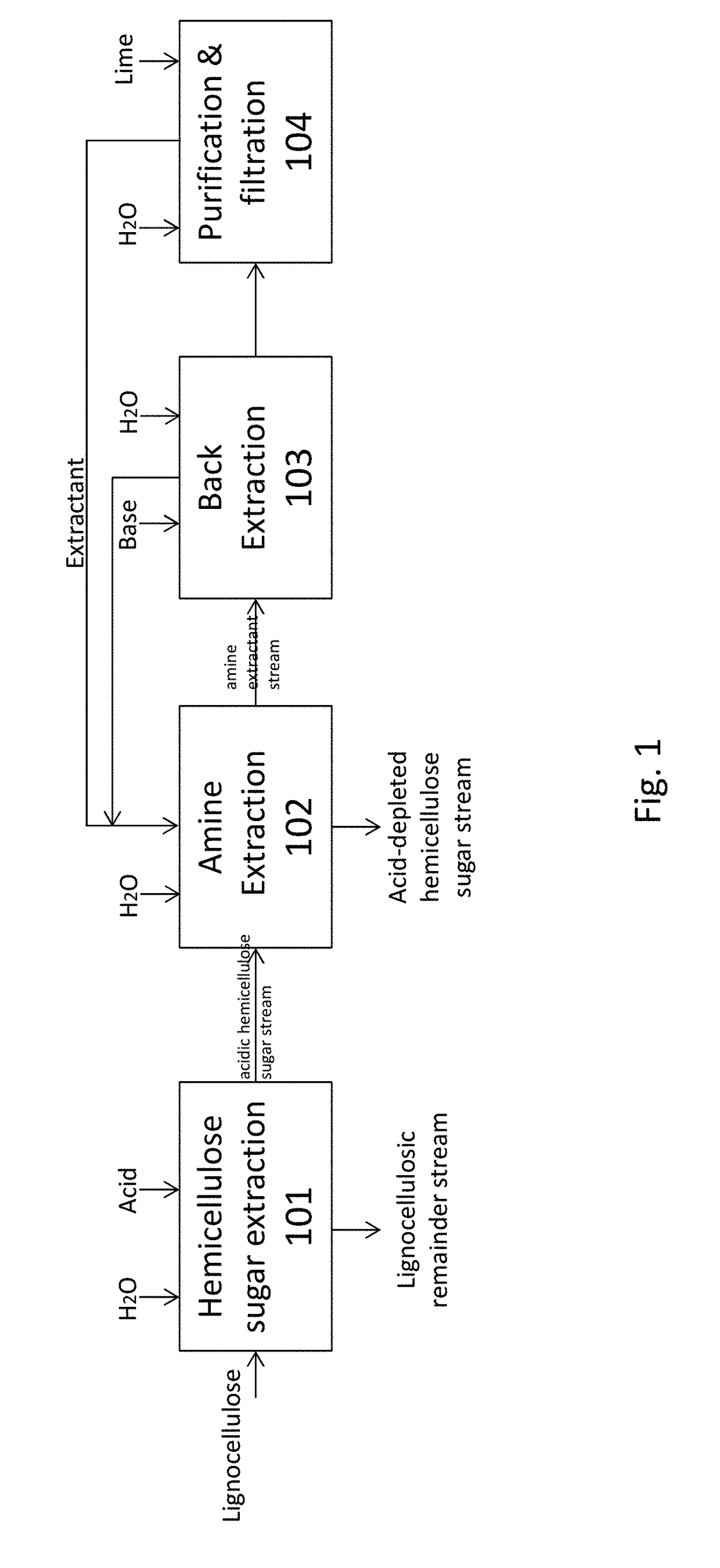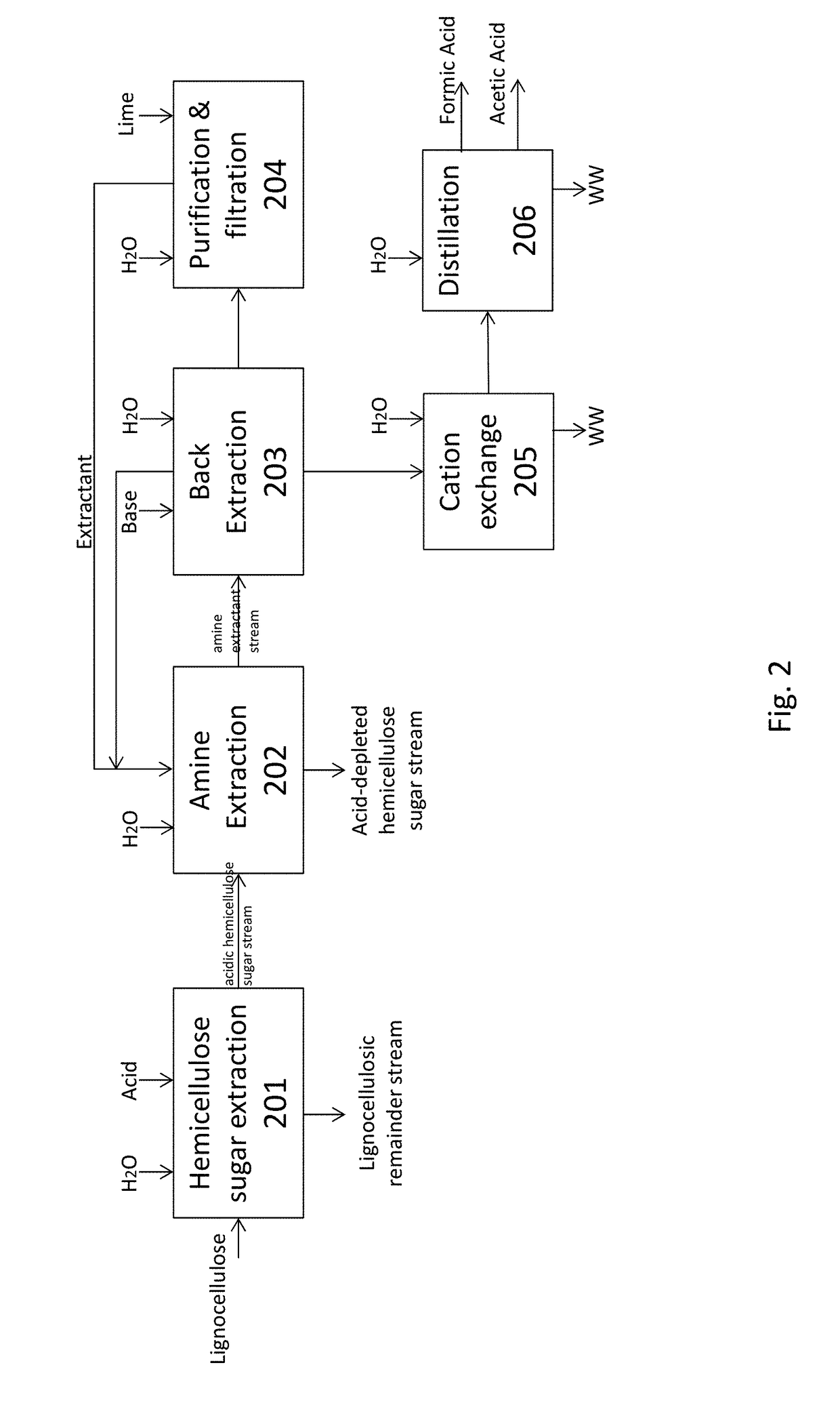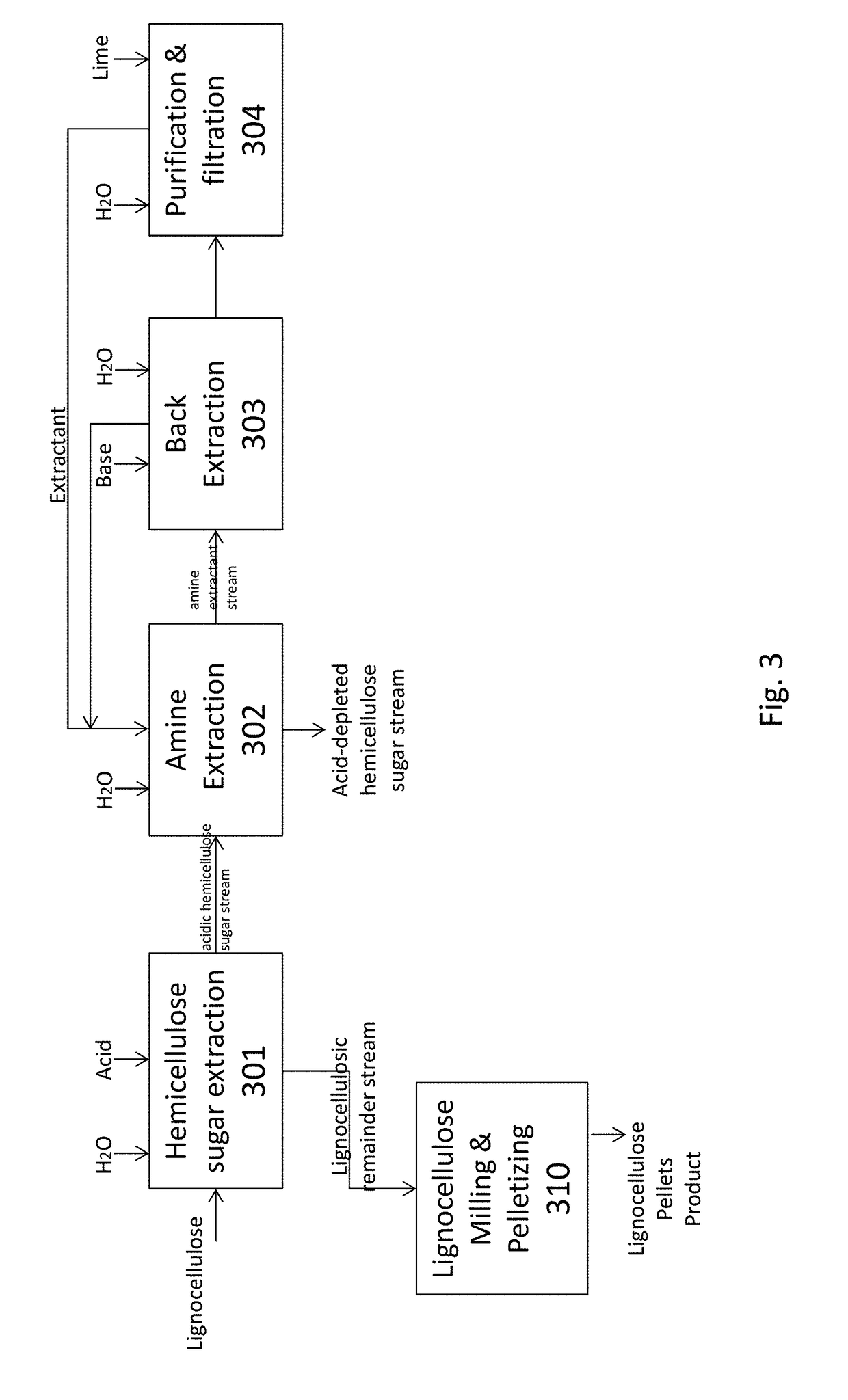Methods for treating lignocellulosic materials
a technology of lignocellulosic biomass and processing method, which is applied in the direction of fibre chemical features, textiles and papermaking, climate sustainability, etc., can solve the problems of c5 and c6 sugar extraction processes that are still a challenge, and achieve the effect of improving the properties of asphalt composition and stability against oxidation
- Summary
- Abstract
- Description
- Claims
- Application Information
AI Technical Summary
Benefits of technology
Problems solved by technology
Method used
Image
Examples
example 1
le Hemicellulose Sugar Extraction
[0155]Table 1 provides a summary of chemical analysis of the liquor resulting from hemicellulose sugar extraction of various biomass types. The % monomeric sugar is expressed as % weight out of total sugars weight. All other results are expressed as % weight relative to dry biomass.
[0156]All treatments were carried out in a 0.5 L pressure reactor equipped with a stirrer and heating-cooling system. The reactor was charged with the biomass and the liquid at amounts given in the table. The reactor was heated to the temperature indicated in the table, time count was started once the reactor reached 5° C. below the designated temperature. Once the time elapsed, the reactor was cooled down. Solid and liquid were separated, and the content of the obtained liquor was analyzed, all data was back calculated relative to dry biomass weight. HPLC methods were applied to evaluate % Total Sugars in the liquor, % monomeric sugars and % Acetic Acid. The % Degradation...
example 2
le Chemical Analysis of Lignocellulose Matter after Hemicellulose Sugar Extraction
[0157]Table 2 provides a summary of chemical analysis of various types of biomass after hemicellulose sugar extraction.
[0158]Pine (ref A1202102-5): Fresh Loblloly pine chips (145.9 Lb dry wood) were fed into a Rapid Cycle Digester (RDC, Andritz, Springfield, Ohio. An acid aqueous solution (500 Lb) was prepared by adding 0.3% H2SO4 and 0.2% SO2 to water in a separate tank. The solution was heated to 135 C and then added to the digester to cover the wood. The solution was circulated through the wood for 40 minutes while maintaining the temperature. After 60 minutes, the resulting liquor was drained to a liquor tank and using steam the wood was blown to a cyclone to collect the wood (128.3 Lb dry wood) and vent the vapor. The extracted wood was analyzed for sugar content, carbohydrate composition, ash, elements (by ICP), and DCM extractives. The analyses of the hemi depleted lignocellulose material show e...
example 3
gnin Extraction
[0161]After hemicellulose sugars were extracted from eucalyptus chips, the remainder was mainly cellulose and lignin. The remainder was delignified using an aqueous organic solution containing acetic acid according to the process described below.
[0162]Eucalyptus wood chips (20.0 g) were mixed with a solution of 50 / 50 v / v of methylethylketone (MEK) and water that contains 1.2% acetic acid w / w of solution at a ratio of 1:10 (100 mL water, 100 mL MEK, and 2.2 g acetic acid). The mixture was treated at 175° C. for 4 hours in an agitated reactor. Then the system was allowed to cool to 30° C. before the reactor is opened. The slurry was decanted and the solid is collected for further analysis.
[0163]After the reaction, there was 127 g free liquid, of which 47.2 g organic and 79.8 g aqueous. The organic phase contained 1.1 g acetic acid, 10.4 g water, and 5.5 g dissolved solids (0.1 g sugars and 5.4 g others, which is mainly lignin). The aqueous phase contained 1.4 g acetic a...
PUM
| Property | Measurement | Unit |
|---|---|---|
| temperature | aaaaa | aaaaa |
| aspect ratio | aaaaa | aaaaa |
| aspect ratio | aaaaa | aaaaa |
Abstract
Description
Claims
Application Information
 Login to View More
Login to View More - R&D
- Intellectual Property
- Life Sciences
- Materials
- Tech Scout
- Unparalleled Data Quality
- Higher Quality Content
- 60% Fewer Hallucinations
Browse by: Latest US Patents, China's latest patents, Technical Efficacy Thesaurus, Application Domain, Technology Topic, Popular Technical Reports.
© 2025 PatSnap. All rights reserved.Legal|Privacy policy|Modern Slavery Act Transparency Statement|Sitemap|About US| Contact US: help@patsnap.com



